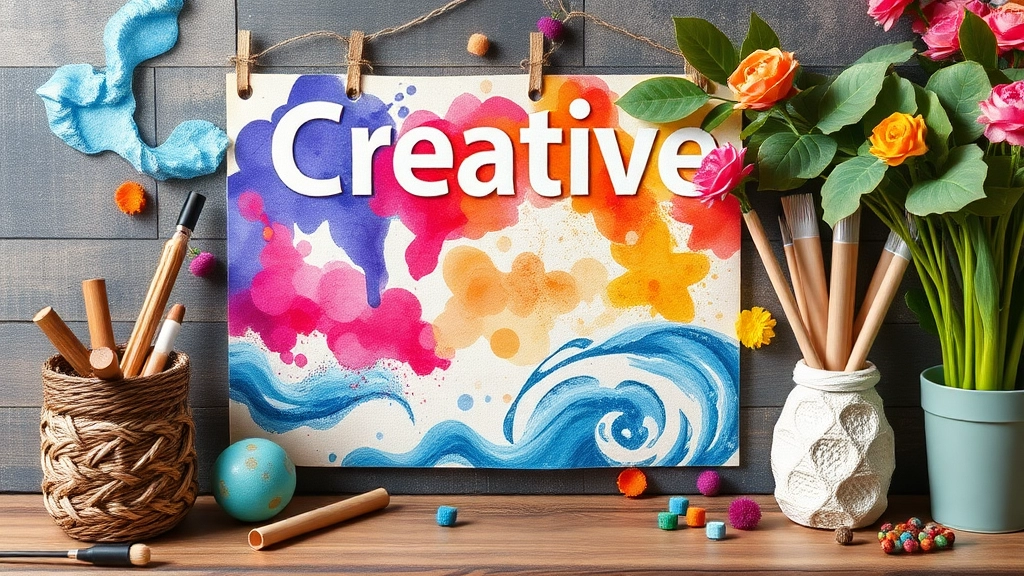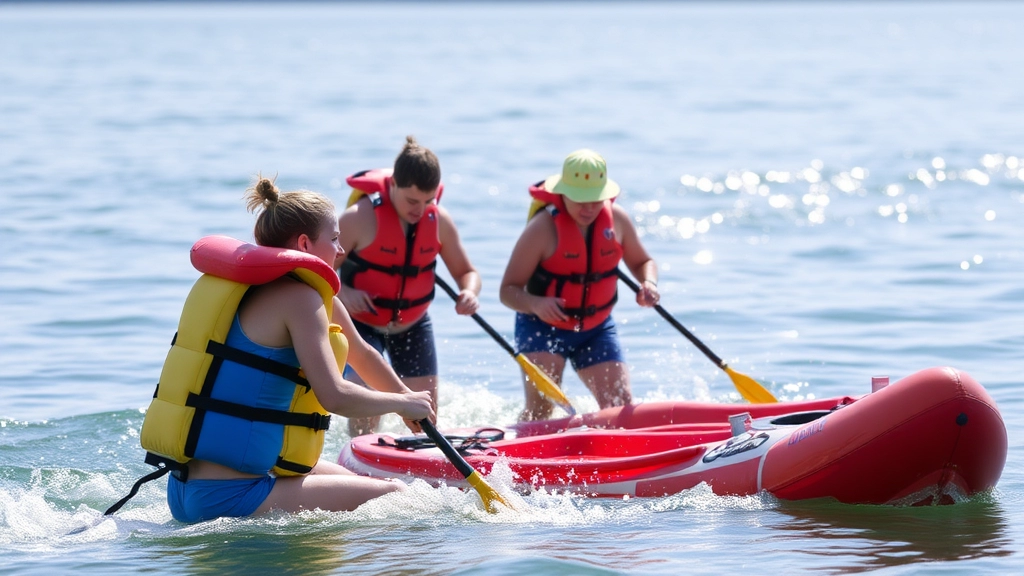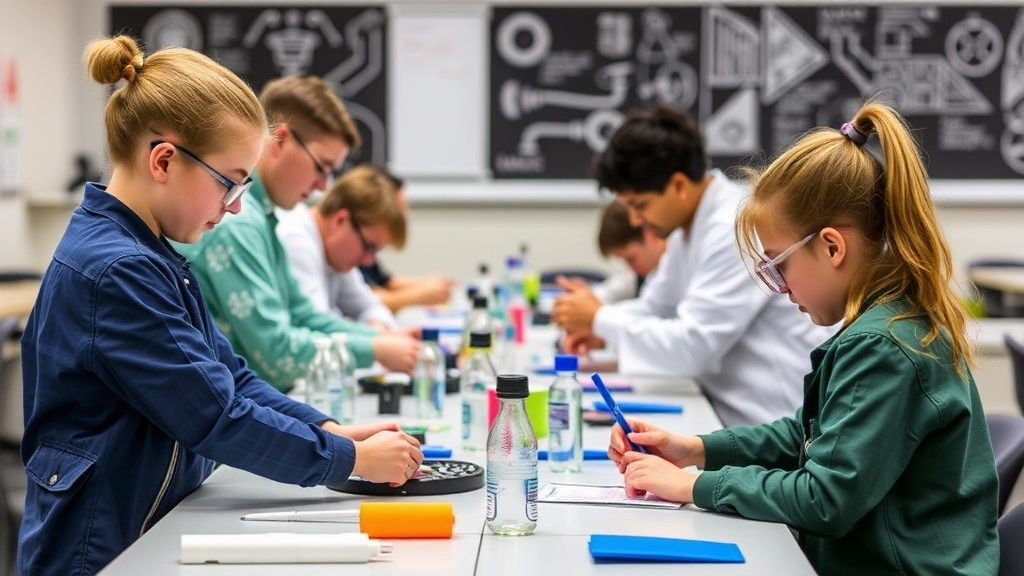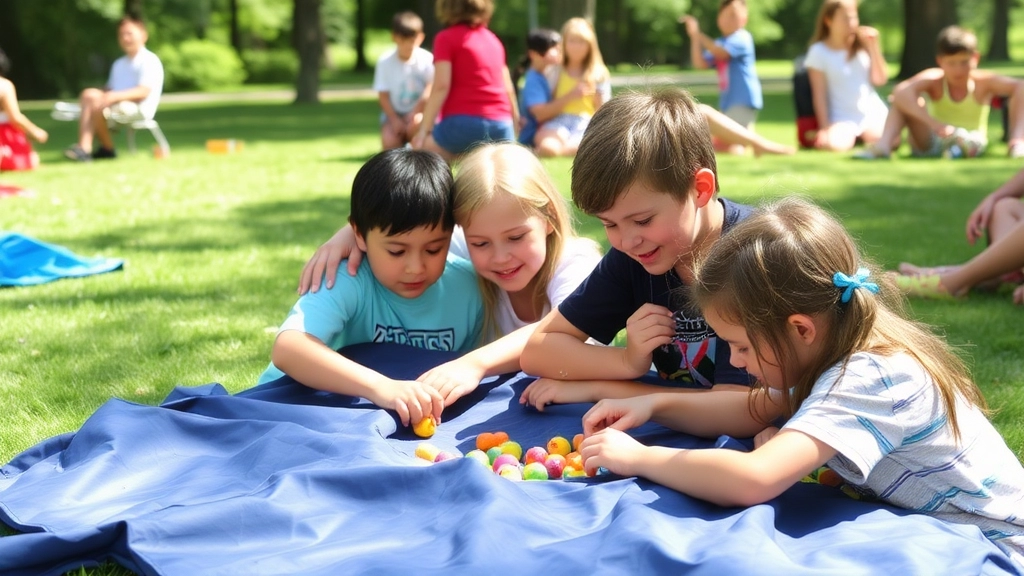Welcome to Summer Camps
Welcome to the vibrant world of summer camps, where Activities In A Summer Camp offer a thrilling mix of adventure, creativity, and learning. From heart-pounding outdoor adventures to serene water-based activities, these camps are designed to engage, educate, and entertain. Dive into a realm where every day brings new experiences and lifelong memories.
Exploring Diverse Activities
In this article, we’ll explore a diverse range of activities, including creative arts, sports, team-building, and more. Discover how these activities not only foster personal growth but also build community and connection. Whether you’re seeking thrills or tranquility, summer camps have something for everyone. Let’s embark on this exciting journey together!
Outdoor Adventure Activities
Alright, let’s talk about Outdoor Adventure Activities. You ever feel like you’re just stuck in a rut, staring at screens all day? I get it. Sometimes, you just need to get out there and feel alive. Outdoor adventure activities are the perfect way to shake things up and get a fresh perspective. Let’s dive into some exhilarating options that’ll get your heart racing and your spirit soaring.
Why Outdoor Adventure Activities?
First off, why even bother with outdoor adventure activities? Simple. They’re a blast, and they’re good for you. Here’s why:
- Physical Health: Boosts your cardiovascular health, builds muscle, and burns calories.
- Mental Health: Reduces stress, improves mood, and enhances mental clarity.
- Social Connection: Great way to bond with friends or make new ones.
Types of Outdoor Adventure Activities
Now, let’s break down some of the most thrilling outdoor adventure activities you can dive into.
1. Hiking and Trekking
Why It’s Awesome: It’s accessible to everyone. Whether you’re hitting a local trail or tackling a mountain, hiking offers a fantastic way to connect with nature.
Tips:
- Start with easier trails and work your way up.
- Invest in good hiking boots.
- Always carry a map, water, and snacks.
2. Rock Climbing
Why It’s Awesome: It’s a full-body workout that also challenges your mind. Plus, the view from the top is always worth it.
Tips:
- Take a beginner’s course to learn the ropes.
- Always use proper safety gear.
- Climb with a buddy.
3. Mountain Biking
Why It’s Awesome: It’s fast-paced and thrilling. Plus, it’s a great way to explore rugged terrains.
Tips:
- Wear a helmet and protective gear.
- Start on beginner trails.
- Maintain your bike regularly.
4. Camping
Why It’s Awesome: It’s a chance to unplug and reconnect with nature. Plus, who doesn’t love a good campfire story?
Tips:
- Choose a safe and legal campsite.
- Pack essential gear: tent, sleeping bag, food, and water.
- Follow Leave No Trace principles.
5. Kayaking and Canoeing
Why It’s Awesome: It’s a serene way to explore waterways and get a great upper-body workout.
Tips:
- Learn basic paddling techniques.
- Always wear a life jacket.
- Check weather conditions before heading out.
Real Stories and Examples
Let me share a quick story. A buddy of mine was always stressed out from work. I convinced him to join me on a weekend hiking trip. At first, he was hesitant, but by the end of the hike, he was grinning ear to ear. He said it was the most relaxed he’d felt in months. That’s the magic of outdoor adventure activities.
If you’re looking for more tips on how to make the most of your outdoor adventures, check out our ultimate guide to summer camp volleyball. And for those who love a good story around the campfire, don’t miss our collection of fun and classic summer camp songs.
Creative Arts and Crafts

Ever feel like your creative juices are running dry?
Or maybe you’re just looking for a way to unwind and express yourself?
I get it. We all need that outlet.
Why Creative Arts and Crafts?
Think about it: Creative arts and crafts are more than just a way to pass the time.
They’re a way to:
- Relax: Forget about your worries for a bit.
- Express Yourself: Show who you are without saying a word.
- Learn New Skills: Ever wanted to try painting or knitting?
Types of Creative Arts and Crafts
Here’s a quick rundown of some popular activities:
- Painting and Drawing: Grab some colours and let your imagination run wild.
- Knitting and Crocheting: Perfect for those who love to create something tangible.
- Sculpting and Pottery: Get your hands dirty and make something unique.
- Jewellery Making: Design and wear your creations.
- Origami: Turn paper into art with just a few folds.
Getting Started
Not sure where to begin?
Here are some tips:
- Start Small: Don’t overwhelm yourself. Pick something simple.
- Use Online Tutorials: YouTube is full of easy-to-follow guides.
- Join a Class: Sometimes, it’s more fun to learn with others.
- Visit Craft Stores: They often have beginner kits and friendly staff to help.
Personal Story
I remember my first attempt at painting.
It was a disaster.
But you know what? I loved every minute of it.
It wasn’t about the final product; it was about the process.
Benefits of Creative Arts and Crafts
Here’s why you should give it a go:
- Reduces Stress: Focus on your project and forget the world.
- Boosts Confidence: There’s nothing like finishing a piece and feeling proud.
- Improves Mental Health: Art has a way of healing the mind.
- Encourages Patience: Some projects take time, and that’s okay.
Sports and Physical Fitness
Alright, let’s dive into the nitty-gritty of Sports and Physical Fitness. Ever wondered why some people seem to have endless energy while you’re struggling to get off the couch? Or why your mate can run a marathon and you’re out of breath after a flight of stairs? Yeah, we’ve all been there. But here’s the dealâgetting into sports and physical fitness isn’t just for the pros. It’s for everyone, and it’s way easier than you think.
Why Bother with Sports and Physical Fitness?
First things first, why should you even care? Well, let’s break it down:
- Boost Your Mood: Ever heard of endorphins? These little chemicals in your brain get released when you exercise, making you feel like you’re on top of the world.
- Stay Healthy: Regular physical activity can help you dodge those nasty health issues like heart disease, diabetes, and even some cancers.
- Sleep Better: Struggling with sleep? Physical activity can help you catch those Z’s like a baby.
- Social Life: Sports are a fantastic way to meet new people and build friendships.
Types of Sports and Physical Activities
You don’t have to be a gym rat or a marathon runner to get fit. Here are some options that might just spark your interest:
- Team Sports: Football, basketball, rugbyâyou name it. These are great for socialising and building teamwork skills.
- Individual Sports: Think tennis, swimming, or running. Perfect if you like doing your own thing.
- Fitness Classes: From yoga to HIIT (High-Intensity Interval Training), there’s something for everyone.
- Outdoor Activities: Hiking, cycling, or even a brisk walk in the park. Fresh air does wonders.
Getting Started: No Excuses
Feeling overwhelmed? Don’t be. Here’s how you can kickstart your fitness journey:
- Set Realistic Goals: Don’t aim to run a marathon in a month. Start small. Maybe it’s a 10-minute walk today and a 15-minute walk next week.
- Find What You Love: Hate running? Don’t run. Love dancing? Take a dance class. Simple.
- Create a Routine: Consistency is key. Pick a time that works for you and stick to it.
- Track Your Progress: Keep a journal or use an app to see how far you’ve come. It’s motivating.
Overcoming Common Hurdles
We all face challenges. Here’s how to tackle some common ones:
- Lack of Time: Break it down. Even 10-minute bursts of activity count.
- No Motivation: Find a workout buddy or join a class. Accountability helps.
- Injuries: Listen to your body. Rest when needed and consult a professional if you’re unsure.
Real Stories, Real Results
Let me tell you about my mate, John. John was your typical couch potato, always finding excuses to skip exercise. One day, he decided enough was enough. He started with short walks, then moved on to jogging, and eventually joined a local football team. Now, he’s fitter, happier, and has a whole new circle of friends. If John can do it, so can you.
And hey, if you’ve got any questions or need some tips, drop me a message. I’m here to help. Let’s make fitness fun and attainable for everyone. Cheers!
For more inspiration, check out our Judson Robinson Summer Camp and the Loyola Academy 2024 Summer Sports Camp Guide. These camps offer a variety of sports and activities that can help you get started on your fitness journey.
Team-Building Exercises

Ever felt like your team just isn’t clicking?
Or maybe you’re thinking, “How can we get everyone on the same page?”
Team-building exercises are the answer.
They’re not just corporate jargon—they actually work.
Why Team-Building?
- Boosts Communication: Helps people talk to each other, not just at each other.
- Builds Trust: Trust is the foundation of any good team.
- Improves Problem-Solving: Two heads are better than one, right?
Types of Team-Building Exercises
1. Icebreakers
Perfect for new teams.
- Two Truths and a Lie: Each person shares two truths and one lie about themselves. The team guesses the lie.
- Human Knot: Stand in a circle, grab hands with two different people, and untangle without letting go.
2. Problem-Solving Activities
Great for improving critical thinking.
- Escape Rooms: Work together to solve puzzles and “escape” within a time limit.
- Egg Drop: Build a device to protect an egg from breaking when dropped from a height.
3. Trust-Building Exercises
Essential for creating a safe environment.
- Trust Fall: One person falls backward while the team catches them.
- Blindfolded Obstacle Course: Guide a blindfolded teammate through an obstacle course using only verbal instructions.
4. Outdoor Challenges
Get out of the office and into nature.
- Scavenger Hunts: Find items or complete tasks based on a list.
- Rope Courses: Navigate through high ropes and obstacles.
5. Creative Workshops
Unleash the team’s creative side.
- Art Projects: Collaborate on a mural or piece of art.
- Storytelling Sessions: Share personal stories or create a group story.
Real-Life Example:
We once had a team that just couldn’t gel.
We took them out for an escape room challenge.
Guess what?
They not only escaped but also came back as a stronger unit.
Tips for Successful Team-Building
- Set Clear Goals: Know what you want to achieve.
- Mix It Up: Use a variety of activities to keep things fresh.
- Debrief: Always discuss what was learned afterward.
Nature Exploration and Environmental Education
Ever wondered how to get kids excited about the great outdoors while teaching them to care for the environment? Let’s dive into nature exploration and environmental education. Trust me; it’s more than just a walk in the park.
Why Bother with Nature Exploration?
Let’s be realâkids today are glued to screens. Getting them outside is a challenge. But here’s the kicker: nature exploration isn’t just fun; it’s crucial for their development. It teaches them to appreciate the world around them and understand their role in protecting it.
The Benefits of Environmental Education
Why should you care? Because environmental education is a game-changer. It:
- Boosts Critical Thinking: Kids learn to ask questions and solve problems.
- Encourages Responsibility: They understand the impact of their actions on the environment.
- Promotes Physical Health: Fresh air and physical activity are unbeatable.
- Improves Mental Health: Nature reduces stress and boosts mood.
Getting Started with Nature Exploration
You don’t need to be a seasoned naturalist to get started. Here’s how you can make it happen:
- Local Parks and Trails: Start small. Visit local parks and trails. They’re often free and accessible.
- Nature Scavenger Hunts: Create a list of items to findâleaves, rocks, insects. It’s like Pokémon Go, but real.
- Bird Watching: Grab a pair of binoculars and a bird guide. It’s surprisingly addictive.
- Gardening Projects: Plant a garden. Kids love getting their hands dirty and watching things grow.
Environmental Education Activities
Now, let’s talk about some killer activities that blend fun and learning:
- Recycling Workshops: Teach kids how to sort and recycle different materials.
- Water Conservation Projects: Show them how to save water with simple changes at home.
- Energy Audits: Conduct a home energy audit to find ways to save electricity.
- Wildlife Habitat Creation: Build birdhouses or insect hotels.
Real-Life Example: The Butterfly Garden
A few summers ago, I decided to create a butterfly garden with my kids. We researched local butterfly species, planted the right flowers, and even set up a small water source. Over the weeks, we saw caterpillars turn into butterflies. It was magical and educational. The kids learned about life cycles, pollination, and the importance of native plants.
Tackling Common Concerns
“But what if my kid hates bugs?” Start with less intimidating activities like gardening or bird watching. Gradually introduce more adventurous tasks.
“We live in the city. How can we explore nature?” Urban environments have parks, community gardens, and nature centres. Even a balcony garden can be a mini-ecosystem.
Water-Based Activities

Ever wondered how much fun you could have with water-based activities?
I mean, seriously, who doesn’t love splashing around and cooling off on a hot day?
Water-based activities are a blast.
They offer a mix of excitement, relaxation, and a good workout.
And let’s face it, they’re perfect for all ages.
Why Water-Based Activities?
First off, water-based activities are a fantastic way to stay active.
You get to work out without even realising it.
Plus, they’re super refreshing.
Here’s why you should dive in:
- Fun and Fitness: You burn calories and have a great time.
- Low Impact: Perfect for anyone with joint issues.
- Versatile: From swimming to kayaking, the options are endless.
Popular Water-Based Activities
Alright, let’s break it down.
What can you actually do?
Here are some top picks:
- Swimming: Classic, right? It’s great for your whole body.
- Kayaking: Perfect for exploring rivers and lakes.
- Paddleboarding: Test your balance and core strength.
- Snorkelling: Discover underwater life up close.
- Water Polo: A fun team sport that’s super engaging.
Safety First
Look, water activities are fun, but safety is key.
Here are some quick tips:
- Wear a Life Jacket: Especially if you’re not a strong swimmer.
- Stay Hydrated: It’s easy to forget when you’re in the water.
- Know Your Limits: Don’t push yourself too hard.
Real Stories
I remember a time when I went kayaking with a mate.
We had no idea what we were doing, but it was a laugh.
We ended up racing each other and capsizing more than once.
Good times.
And guess what?
By the end of it, we were exhausted but felt amazing.
Performing Arts and Drama
Are you looking to boost confidence and creativity through performing arts and drama? Many of us worry about stage fright or not being “good enough” to perform. Trust me, I’ve been there. But here’s the thing: drama isn’t just about acting; it’s about expression, and everyone has a story to tell.
Why Performing Arts?
Performing arts offer a unique way to express yourself and connect with others. Whether you’re into acting, dancing, or singing, it’s all about finding your voice and having fun. Plus, it teaches valuable skills like:
- Communication: Learn to express ideas clearly.
- Teamwork: Collaborate with others to create something amazing.
- Confidence: Overcome fears and build self-esteem.
Getting Started
If you’re new to drama, don’t sweat it. Here’s how to dive in:
- Join a Local Group: Find a community theatre or drama club.
- Take a Class: Many places offer beginner workshops.
- Start Small: Participate in small performances to ease in.
Techniques to Master
Want to improve your skills? Focus on these key areas:
- Voice Control: Practice projection and clarity.
- Body Language: Use gestures to convey emotions.
- Improvisation: Think on your feet and adapt quickly.
Real Stories
Let’s talk about Sarah. She was terrified of public speaking but joined a drama club. Through acting exercises and supportive peers, she gained confidence and now leads presentations at work. It’s not just about performing; it’s about personal growth.
Overcoming Challenges
Worried about making mistakes? Here’s the deal:
- Embrace Failure: It’s part of the process. Learn and move on.
- Practice Regularly: Consistency builds skill.
- Seek Feedback: Constructive criticism helps you improve.
Opportunities for Growth
Performing arts open doors to various opportunities:
- Competitions: Test your skills and gain recognition.
- Workshops: Learn from experts and enhance your craft.
- Networking: Meet like-minded individuals and build connections.
For more tips on engaging in performing arts, check out our top summer camp musicals and discover how to make the most of your summer with our summer camp weekly themes.
Science and Technology Workshops

Ever wondered how to get kids excited about learning?
Science and technology workshops might just be the answer.
Why Science and Tech?
Think about it.
Kids love gadgets, robots, and anything that lights up or makes noise.
But how do you turn that curiosity into something educational?
Hands-On Learning
Forget boring lectures.
We’re talking about hands-on experiments and interactive sessions.
Here’s what works:
- Build a Robot: Let them assemble and program their own mini-robot.
- Simple Coding: Use apps that teach coding through games.
- Science Experiments: Think volcano eruptions, slime making, and more.
Real-Life Applications
Make it relatable.
Show them how what they’re learning applies to real life.
- Weather Station: Set up a mini weather station and track local weather.
- Eco Projects: Create small wind turbines or solar-powered gadgets.
- Space Exploration: Use telescopes to explore the night sky.
Tech Talks
Bring in experts.
Kids love hearing from people who actually work in these fields.
- Guest Speakers: Engineers, scientists, and tech gurus.
- Virtual Tours: Visits to labs or tech companies via video calls.
Interactive Demos
Show, don’t tell.
- 3D Printing: Print small objects and let kids design their own.
- Virtual Reality: Use VR headsets for immersive learning experiences.
- Drones: Teach them how to fly and program mini-drones.
Keep it Fun
This is key.
If it’s not fun, they’ll lose interest.
- Competitions: Robotics or coding challenges.
- Group Projects: Encourage teamwork and collaboration.
- Prizes: Small rewards for participation and creativity.
Wrap-Up
Science and technology workshops are a fantastic way to make learning fun and engaging.
From building robots to exploring space, there’s something for everyone.
And who knows?
You might just inspire the next great inventor or scientist.
Cultural and Educational Trips
Ever wondered why cultural and educational trips can be game-changers? Let’s dive into it. Whether you’re a parent looking to enrich your kid’s life or someone planning an epic group outing, cultural and educational trips offer a ton of benefits. Let’s break it down.
Why Choose Cultural and Educational Trips?
First off, what’s the big deal about cultural and educational trips? Here’s why they’re worth your time:
- Broaden Horizons: These trips expose you to new cultures, histories, and perspectives. It’s like stepping into a living textbook.
- Hands-On Learning: Forget boring classroom lectures. Here, you get to see, touch, and experience things firsthand.
- Boosts Social Skills: Travelling in groups means interacting with different people, which can improve communication and teamwork.
- Memorable Experiences: These aren’t just trips; they’re stories you’ll tell for years.
Types of Cultural and Educational Trips
So, what kind of trips are we talking about? Here are a few options that pack a punch:
Historical Tours
- Museums and Monuments: Think British Museum or Stonehenge. These places are treasure troves of knowledge.
- Walking Tours: Cities like London offer walking tours that dive deep into their rich histories.
Art and Culture Trips
- Theatre Visits: Catch a play at the West End. It’s not just entertainment; it’s a cultural experience.
- Art Galleries: The Tate Modern or National Gallery can be eye-openers.
Science and Technology Excursions
- Science Museums: Explore the Science Museum in London. It’s interactive and fun.
- Tech Hubs: Visit places like Silicon Roundabout to see tech innovations in action.
Planning Your Trip
Alright, you’re sold on the idea. But how do you plan a killer cultural and educational trip? Here’s a quick guide:
- Set Clear Goals: What do you want to achieve? Learning about history, art, science?
- Research: Look up places that align with your goals. Check reviews and ratings.
- Budget: Plan your finances. Consider travel, accommodation, and entry fees.
- Itinerary: Create a day-by-day plan but leave room for spontaneity.
- Group Dynamics: If you’re going in a group, consider everyone’s interests and needs.
Real-Life Example
Last summer, I took a group of students to the British Museum. We had a blast exploring the Egyptian exhibit. The kids were fascinated by the mummies and hieroglyphics. One of them even decided to do their school project on ancient Egypt after the trip. That’s the kind of impact we’re talking about.
If you’re looking for more ideas on how to make the most of your trips, check out our guide on summer sports camp benefits and preparation. For those planning group travels, our summer volunteer guide can offer some great tips on getting everyone involved.
Evening Entertainment and Social Events
Ever wondered how to keep the energy high after a day packed with activities?
You’re not alone.
Evening entertainment and social events are crucial for winding down and keeping the fun rolling.
But how do you make it memorable?
Here’s the lowdown.
Why Evening Entertainment Matters
Evening entertainment isn’t just about filling time.
It’s about creating unforgettable moments.
Think about it.
After a day of outdoor adventure, creative arts, or team-building exercises, everyone needs a way to relax and bond.
Types of Evening Entertainment
Here’s where it gets interesting.
You’ve got options.
Movie Nights:
- Classic films or the latest blockbusters.
- Popcorn and comfy seating.
- Perfect for a laid-back evening.
Talent Shows:
- Let everyone showcase their hidden talents.
- Singing, dancing, magic tricks.
- It’s a blast and a great confidence booster.
Campfires:
- Storytelling and marshmallow roasting.
- Acoustic guitar sessions.
- Nothing beats the warmth of a campfire.
Themed Parties:
- Fancy dress, masquerades, or beach parties.
- Music, games, and themed snacks.
- Everyone loves a good party.
Game Nights:
- Board games, trivia, or charades.
- Interactive and fun.
- Great for team bonding.
Making It Social
Social events are all about connection.
You want everyone to feel included.
Ice-Breaker Activities:
- Quick, fun games to get everyone talking.
- Name games, two truths and a lie.
- Breaks the awkwardness.
Group Discussions:
- Reflect on the day’s activities.
- Share experiences and thoughts.
- Builds a sense of community.
Dance Parties:
- Play everyone’s favourite tunes.
- Create a dance floor vibe.
- Let loose and have fun.
Real Stories, Real Fun
Remember that time we had a talent show?
John, the quiet guy, surprised everyone with his incredible guitar skills.
Or the night we had a themed party and everyone dressed up as their favourite movie characters?
These moments stick.
They make the experience richer.
For more ideas on making your summer camp unforgettable, check out our top summer camp games and activities guide and explore unique summer camp themes to keep the excitement going!
FAQs About Activities in a Summer Camp
What are some popular creative arts and crafts activities at summer camps?
Popular creative arts and crafts activities include painting and drawing, knitting and crocheting, sculpting and pottery, jewellery making, and origami. These activities help campers relax, express themselves, and learn new skills.
Why should I participate in creative arts and crafts?
Creative arts and crafts offer numerous benefits such as reducing stress, boosting confidence, improving mental health, and encouraging patience. They provide a wonderful outlet for self-expression and relaxation.
What types of team-building exercises are commonly included in summer camps?
Team-building exercises often include icebreakers like “Two Truths and a Lie” and “Human Knot,” problem-solving activities like escape rooms and egg drops, trust-building exercises such as trust falls and blindfolded obstacle courses, outdoor challenges like scavenger hunts and rope courses, and creative workshops involving art projects and storytelling sessions.
How do team-building exercises benefit campers?
Team-building exercises help boost communication, build trust, and improve problem-solving skills. They are essential for creating a cohesive and collaborative environment among campers.
What are some popular water-based activities at summer camps?
Popular water-based activities include swimming, kayaking, paddleboarding, snorkelling, and water polo. These activities are fun, refreshing, and provide a good workout.
Why are water-based activities beneficial?
Water-based activities are great for fitness as they burn calories while being low impact, making them suitable for individuals with joint issues. They are also versatile and enjoyable for all ages.
What safety measures should be taken during water-based activities?
Important safety measures include wearing a life jacket, staying hydrated, and knowing your limits to avoid overexertion. Safety is key to ensuring a fun and secure experience.
What types of science and technology workshops are available at summer camps?
Science and technology workshops may include building robots, simple coding, hands-on science experiments, setting up weather stations, eco projects, space exploration, tech talks with guest speakers, virtual tours, and interactive demos like 3D printing, virtual reality, and drones.
How do science and technology workshops benefit campers?
These workshops make learning fun and engaging by offering hands-on experiences and real-life applications. They can ignite curiosity and inspire future interests in science and technology fields.
How can campers get started with creative arts and crafts?
Campers can start small with simple projects, use online tutorials, join a class, or visit craft stores for beginner kits and advice. The key is to start with something manageable and gradually explore more complex activities.
What are some tips for successful team-building activities?
To ensure successful team-building, set clear goals, mix up the activities to keep things fresh, and always debrief to discuss what was learned. These steps help maximize the benefits of the exercises.
References
-
Craftsy – Online Craft Classes & Craft Supplies
-
Mindful Art Studio – Art for Relaxation and Mindfulness
-
Teamwork – 15 Team Building Exercises for Any Team

